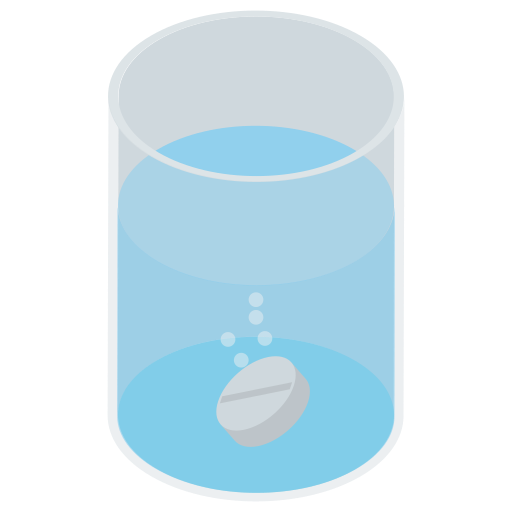
Levosalbutamol
1.25 mg/3 ml
Incepta Pharmaceuticals Ltd.
Product Details
Description
Using an Inhaler seems simple, but most patients do not know how to use it in the right way. If the Inhaler is used in the wrong way, less medicine can reach the lungs. Correct and regular use of the Inhaler will prevent or lessen the severity of asthma attacks. Following simple steps can help to use Inhaler effectively (According to "National Asthma Guidelines for Medical Practitioners" published by Asthma Association): Take off the cap. Shake the inhaler (at least six times) vigorously before each use. If the inhaler is new or if it has not been used for a week or more, shake it well and release one puff into the air to make sure that it works. Breathe out as full as comfortably possible & hold the inhaler upright. Place the actuator into mouth between the teeth and close lips around the mouthpiece. While breathing deeply and slowly through the mouth, press down firmly add fully on the canister to release medicine. Remove the inhaler from mouth. Continue holding breath for at least for 10 seconds or as long as it is comfortable. If doctor has prescribed more than one inhalation per treatment, wait 1 minute between puffs (inhalations). Shake the inhaler well and repeat steps 4 to 7. After use, replace the cap on the mouthpiece. After each treatment, rinse mouth with water. Check your technique in front of a mirror from time to time, if you see a white mist during the inhalation, you may not have closed your lips properly around mouthpiece, or you may not be breathing in as you press the can. This indicates failure of technique. If this happens, repeat the procedure from step 4 carefully. Instructions for Cleaning Inhaler: Clean your Inhaler at least once a week. Remove canister and rinse the plastic actuator and cap in warm water but do not put the metal canister into water. Dry the actuator and cap thoroughly and gently replace the metal canister into the actuator with a twisting motion. Put the cap on the mouthpiece.
Other short-acting sympathomimetic aerosol bronchodilators or epinephrine should be used with caution with Levosalbutamol. If additional adrenergic drugs are to be administered by any route, they should be used with caution to avoid deleterious cardiovascular effects. Beta-blockers: Beta-adrenergic receptor blocking agents not only block the pulmonary effect of beta-agonists such as Levosalbutamol Nebuliser Solution or Inhaler, but may also produce severe bronchospasm in asthmatic patients. However, under certain circumstances, e.g. prophylaxis after myocardial infarction, there may be no acceptable alternatives to the use of beta-adrenergic blocking agents in patients with asthma. In this setting, cardio selective beta-blockers could be considered with caution. Diuretics: The ECG changes and/or hypokalemia that may result from the administration of non-potassium sparing diuretics can be acutely worsened by beta-agonists when the recommended dose of the beta-agonist is exceeded. Digoxin: It is necessary to carefully evaluate the serum digoxin levels in patients who are currently receiving digoxin and Levosalbutamol Nebuliser Solution or Inhaler. Monoamine Oxidase Inhibitors or Tricyclic Antidepressants: Levosalbutamol Nebuliser Solution or Inhaler should be administered with extreme caution to patients being treated with monoamine oxidase inhibitors or tricyclic antidepressants, or within 2 weeks of discontinuation of such agents.
Potentially serious hypokalaemia may result from beta 2 - agonist therapy. This effect may be potentiated by hypoxia. Other side effects such as palpitation, fine tremors of the skeletal muscle (particularly the hand) and muscle cramps may occur. In few cases nervousness, headache, dizziness, fatigue and sleeplessness have also been reported.
Pregnancy: There are no adequate and well-controlled studies of Levosalbutamol Nebuliser Solution in pregnant women. Levosalbutamol Solution should be used during pregnancy only if the potential benefit justifies the potential risk to the fetus. Lactation: It is not known whether Levosalbutamol is excreted in human milk. Caution should be exercised when Levosalbutamol Nebuliser Solution is administered to a nursing woman.
Levosalbutamol Hydrochloride, like all sympathomimetic amines, should be used with caution in patients with cardiovascular disorders, especially coronary insufficiency, hypertension, and cardiac arrhythmias; in patients with convulsive disorders, hyperthyroidism, or diabetes mellitus; and in patients who are unusually responsive to sympathomimetic amines. Levosalbutamol Nebuliser Solution or Inhaler must not be injected.
The expected symptoms with over dosage are those of excessive beta-adrenergic receptor stimulation and/or occurrence or exaggeration of any of the symptoms listed under side effects. Treatment consists of discontinuation of Levosalbutamol Nebuliser Solution or Inhaler together with appropriate symptomatic therapy. The judicious use of a cardioselective beta-receptor blocker may be considered.
Short-acting selective & β2-adrenoceptor stimulants
-
Support 24/7
Call us anytime -
100% Safety
Only secure payments